Collaperture -Film Production App
App designed for amateur filmmakers that aims to streamline the production process from planning to shooting to editing.
Usability Engineering | Prototyping | User Research | User Testing
10 min read




App designed for amateur filmmakers that aims to streamline the production process from planning to shooting to editing.
Usability Engineering | Prototyping | User Research | User Testing
10 min read




Collaperture, our dedicated application for amateur filmmakers, is a holistic solution that transforms the filmmaking journey from inception to completion. Designed with the collaborative spirit in mind, it equips directors, writers, on-set crew, actors, and editors with a suite of indispensable tools, ensuring seamless coordination and organization throughout the production process.
Collaperture is accessible across various devices, offering tailored interfaces for distinct user roles, making it a versatile and user-friendly tool.
Directors can effortlessly plan and share shot lists and production schedules, fostering efficient communication and alignment among the team.
On-set crew members can capture crucial shooting details, provide valuable take feedback, and contribute to the streamlined organization and labeling of footage files.
Collaperture's ultimate aim is to elevate workflow, enhance communication, and boost productivity within the world of amateur filmmaking, empowering enthusiasts to bring their creative visions to life with ease.
Our mission is to create an application tailored to the needs of amateur filmmakers, with the Filmmakers Club at Virginia Tech serving as our primary client and a representation of our potential user base.
Our goal is to cater to the broader community of amateur filmmakers, irrespective of their budget constraints. While our focus is not on single-person teams, our product can still offer value to them.
Our solution aims to benefit filmmaking teams, whether they have a formal club setting like our client or not. However, our design will primarily align with the needs of users like our client, as we haven't extensively studied the requirements of other team structures.
Our project's scope is clear: crafting a versatile application that empowers amateur filmmakers and accommodates a range of user scenarios, all while building upon the insights gleaned from our collaboration with the Filmmakers Club.
Conducted interviews and observations to explore the diverse tasks and roles within the filmmaking process, gaining a deeper understanding of amateur filmmakers' workflows.
Semi-structured interviews, co-developed with club officers acting as both facilitators and users, revealed nuanced details about various filmmaking roles and their responsibilities.
The collaboration emphasized leveraging the expertise of club members to gain valuable insights, ensuring a deeper understanding of the challenges and workflows in amateur film production.
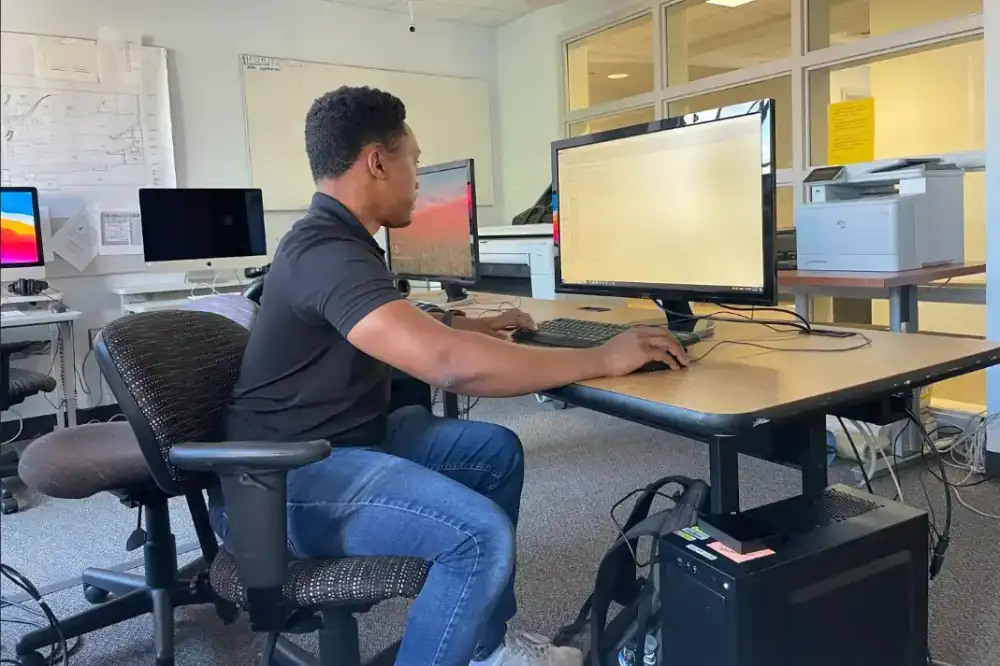
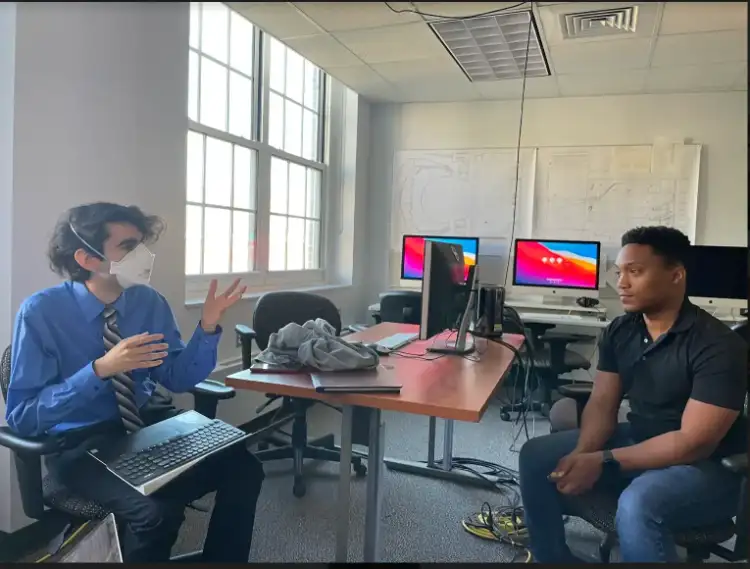
Work activity notes (WANs) from user interviews were converted into virtual sticky notes for each data point, enabling better organization and visualization.
Observations were categorized based on user work roles (e.g., directors, editors, writers, cinematographers), reflecting the diverse responsibilities during the filmmaking process.
The division of observations by user roles provided a structured way to analyze the diverse responsibilities and workflows of the interviewees, enhancing the understanding of their needs and tasks.

The model organizes filmmaking into three clear stages—pre-production, during production, and post-production—outlined with defined boundaries, ensuring focus and clarity in the workflow.
By framing only the essential tasks within the rectangles, the model excludes unnecessary elements from the process, streamlining production for smaller filmmakers.
The model was developed to compensate for the lack of a well-defined system in smaller productions, providing a foundational structure for efficient filmmaking.
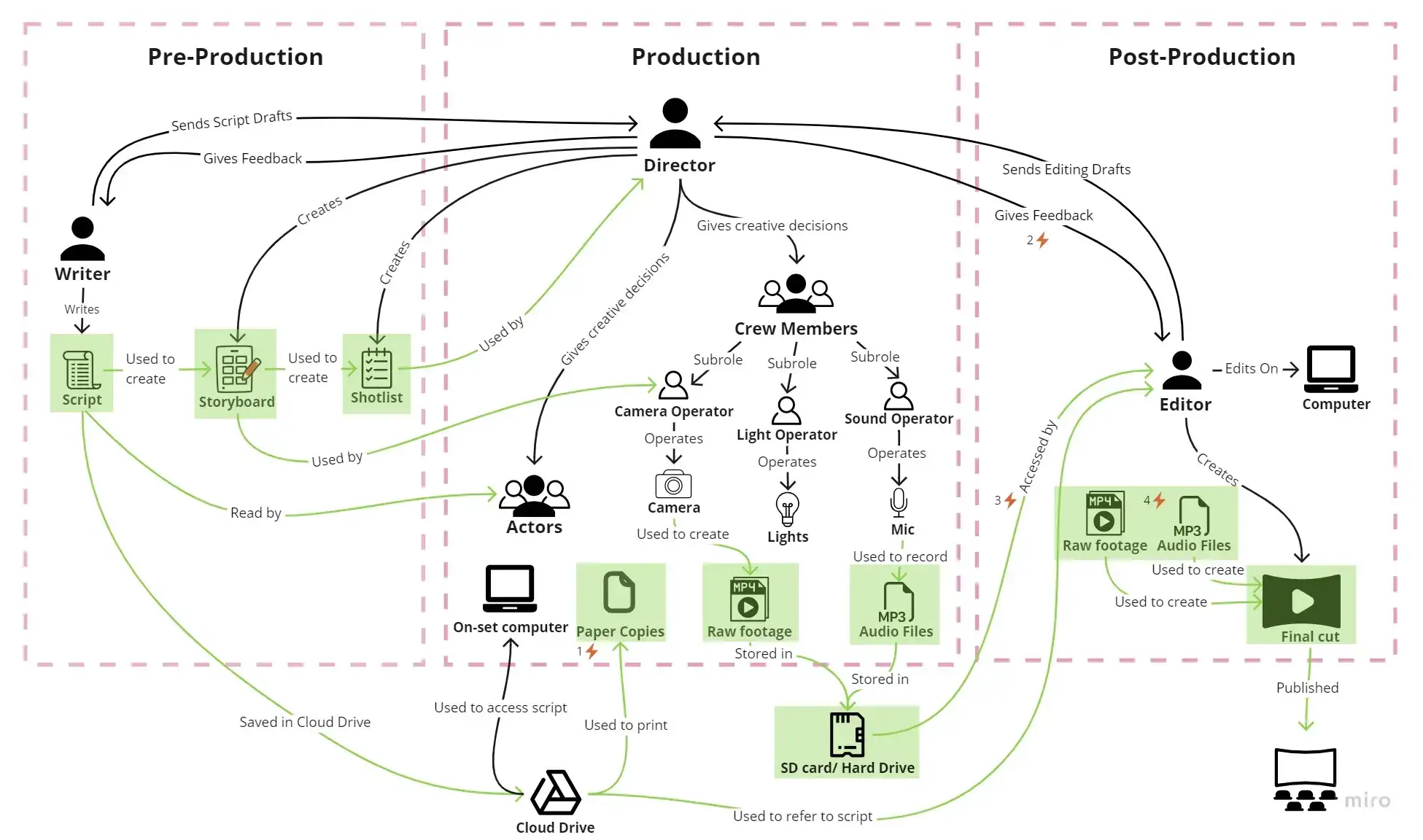
Tasks are organized by production phases (e.g., pre-production, production, post-production), ensuring clarity as each phase is mutually exclusive and sequential.
Within each phase, tasks are further broken down to align with specific work roles, facilitating efficient role-based task management.
All conceivable tasks, including those beyond the project's scope, are included and visually differentiated (e.g., color-coded in pink) to provide a complete overview.
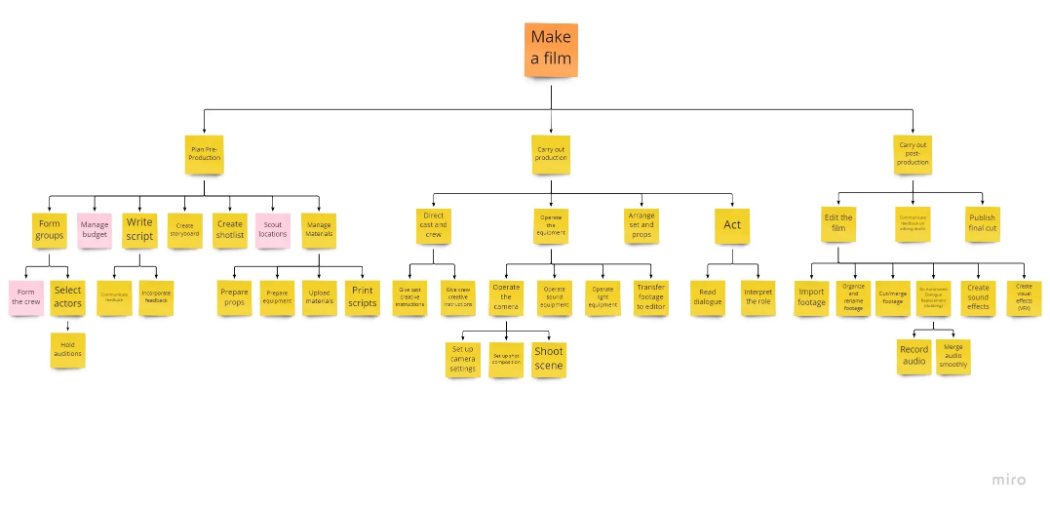
The proposed model ensures directors have a guided process with comprehensive details for better planning and execution.
Organized data optimizes post-production tasks, elevating overall efficiency and refining film production processes.
Notifications and data recording (scene, shot, take numbers, feedback, ratings) improve collaboration and streamline production workflows.
Intuitive metaphors like a clapperboard and emojis simplify data entry on mobile interfaces, while physical devices use buttons and displays for ease of use.
Automated folder structures with take numbers and ratings improve post-production workflows, aiding editors in selecting footage efficiently.
A preview screen demonstrates the transformation process, fostering confidence and improving overall productivity in film production.
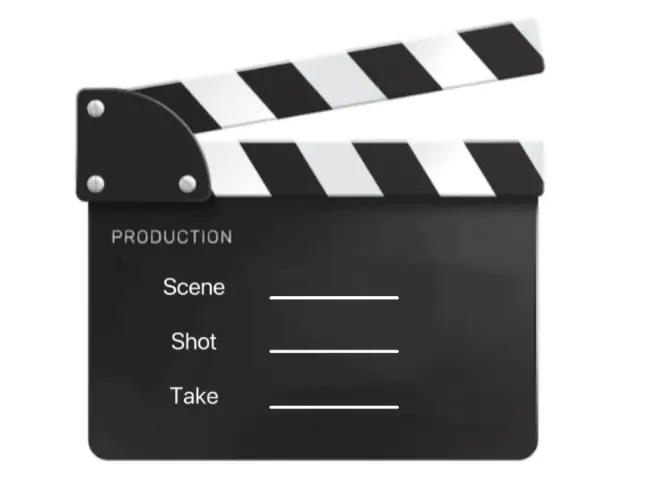
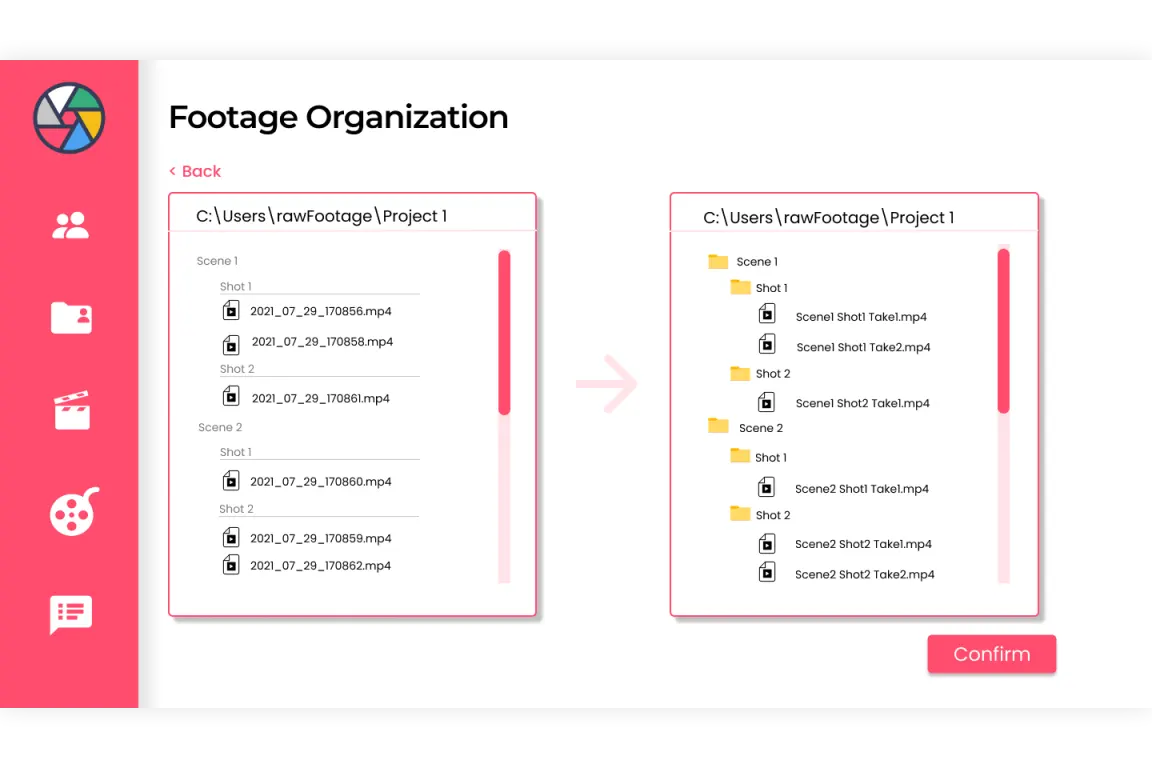
We brainstormed new film production tool concepts using task sequence models. We employed generative design techniques, refining ideas through feedback and critiques. Key features included auto-organizing footage files and scheduling with notifications. Client interviews garnered positive feedback, leading to design updates before progressing to conceptual design.

The wireframes illustrate the shot list creation process within a web or desktop application. Users input script and storyboard details, such as settings, actors, and shots, and make scheduling decisions. They select shoot days, assign shots, rearrange sequences, and set concrete dates based on various factors. The final shot list provides a comprehensive summary of this information, simplifying the process for users.
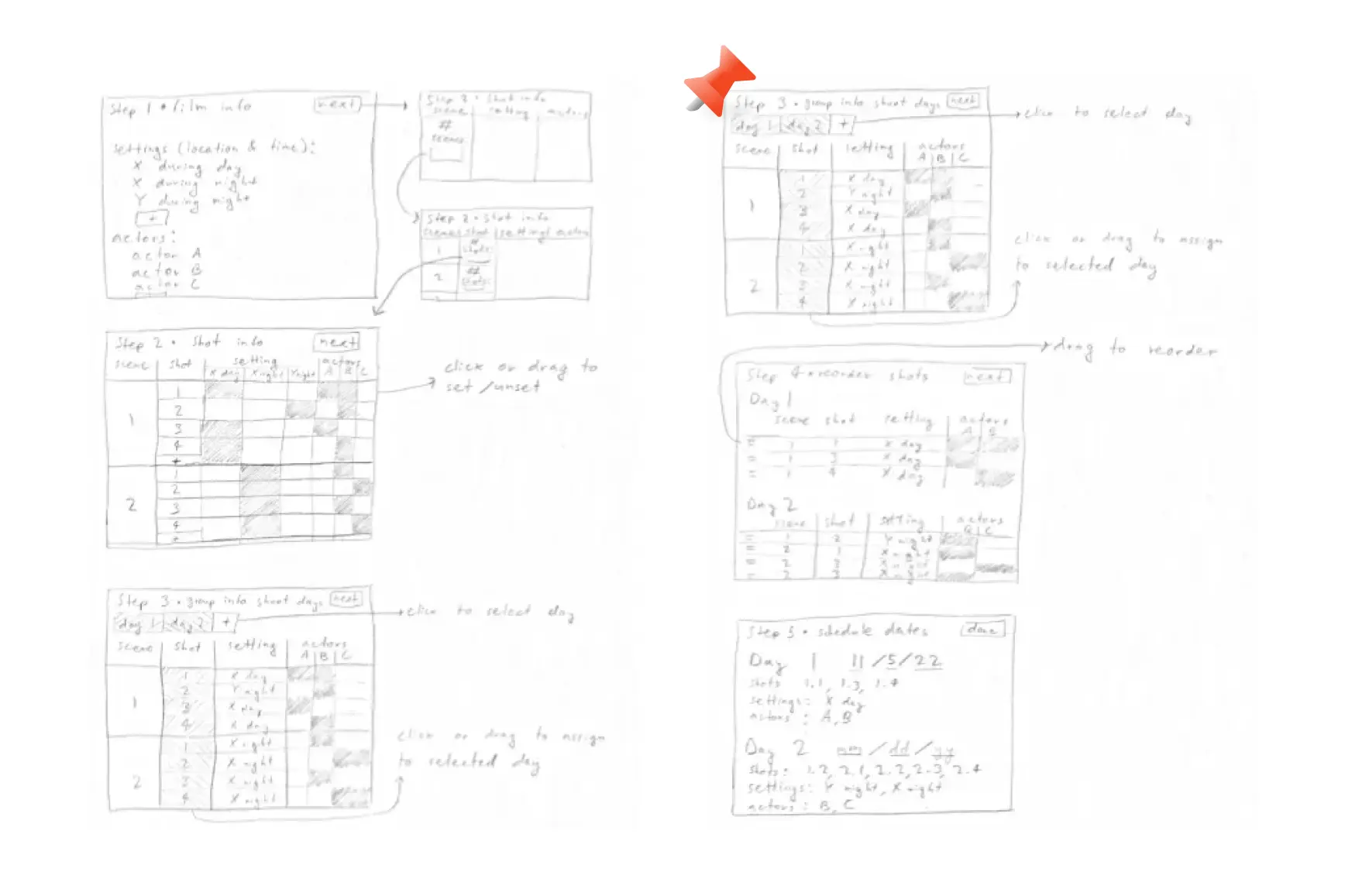
Our wireframes demonstrate the automatic organization and renaming of footage files within a desktop application. Users choose the folder containing unorganized files and preview the impending changes. They can access ratings and notes recorded for each take during shooting. Additionally, an alternate representation in the wireframes highlights differences to address in the prototyping phase, ensuring a seamless user experience.

Objective: Efficiently onboard users and assign roles within the crew and cast.
Key Metric: Achieve a 90% completion rate for user role assignments.
This KPI addresses the critical initial step of user engagement. Efficiently inviting users and ensuring they understand their roles are essential for a smooth filmmaking process. It ensures that users can quickly get started and collaborate effectively within the app.
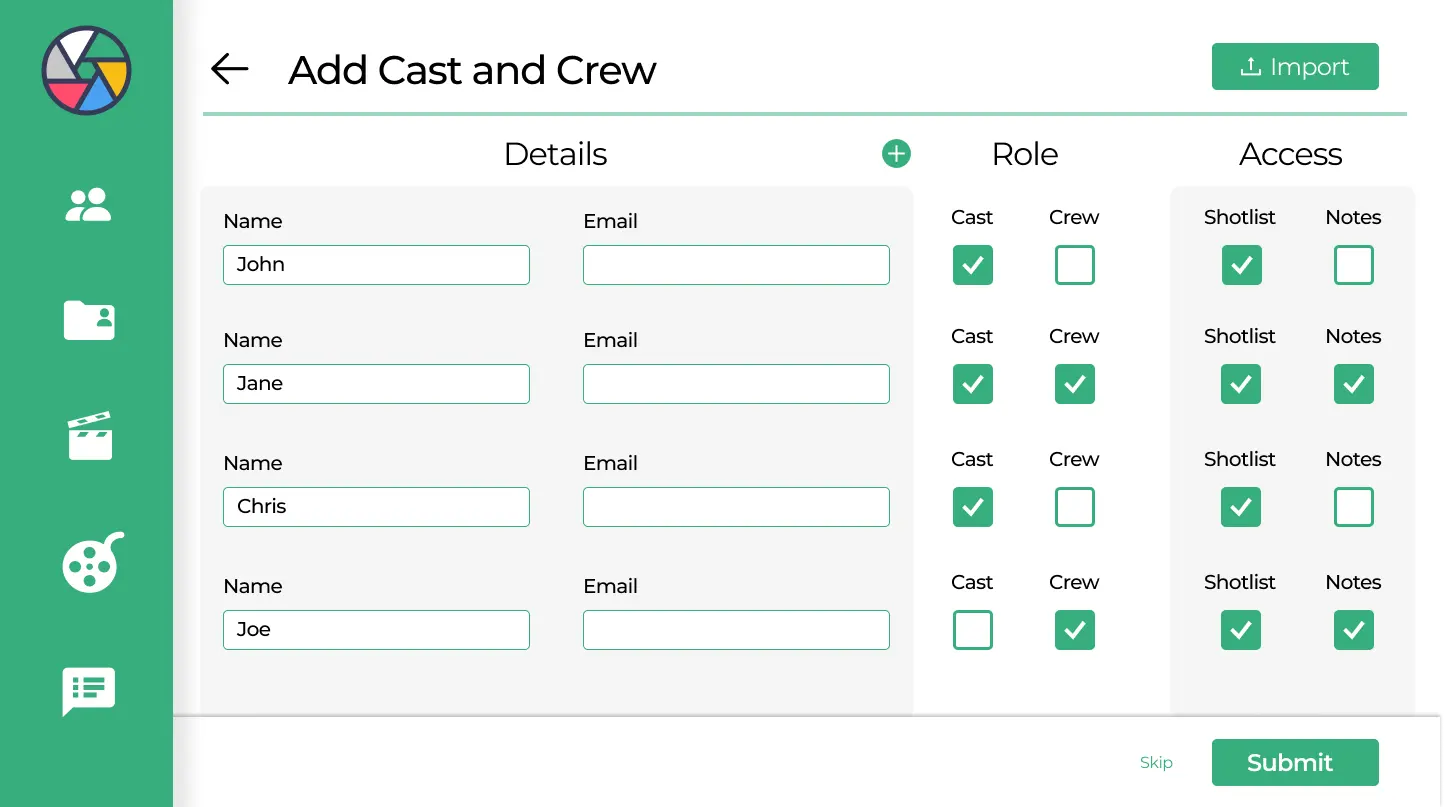
Objective: Streamline the shot list creation process for seamless filmmaking.
Key Metric: Reduce the average time spent on shot list creation by 25%.
Creating a shot list is a pivotal task in filmmaking. By reducing the time spent and providing a user-friendly wizard, you enhance the creative process. Success in this KPI means users can effortlessly plan their shots, promoting efficient filmmaking.
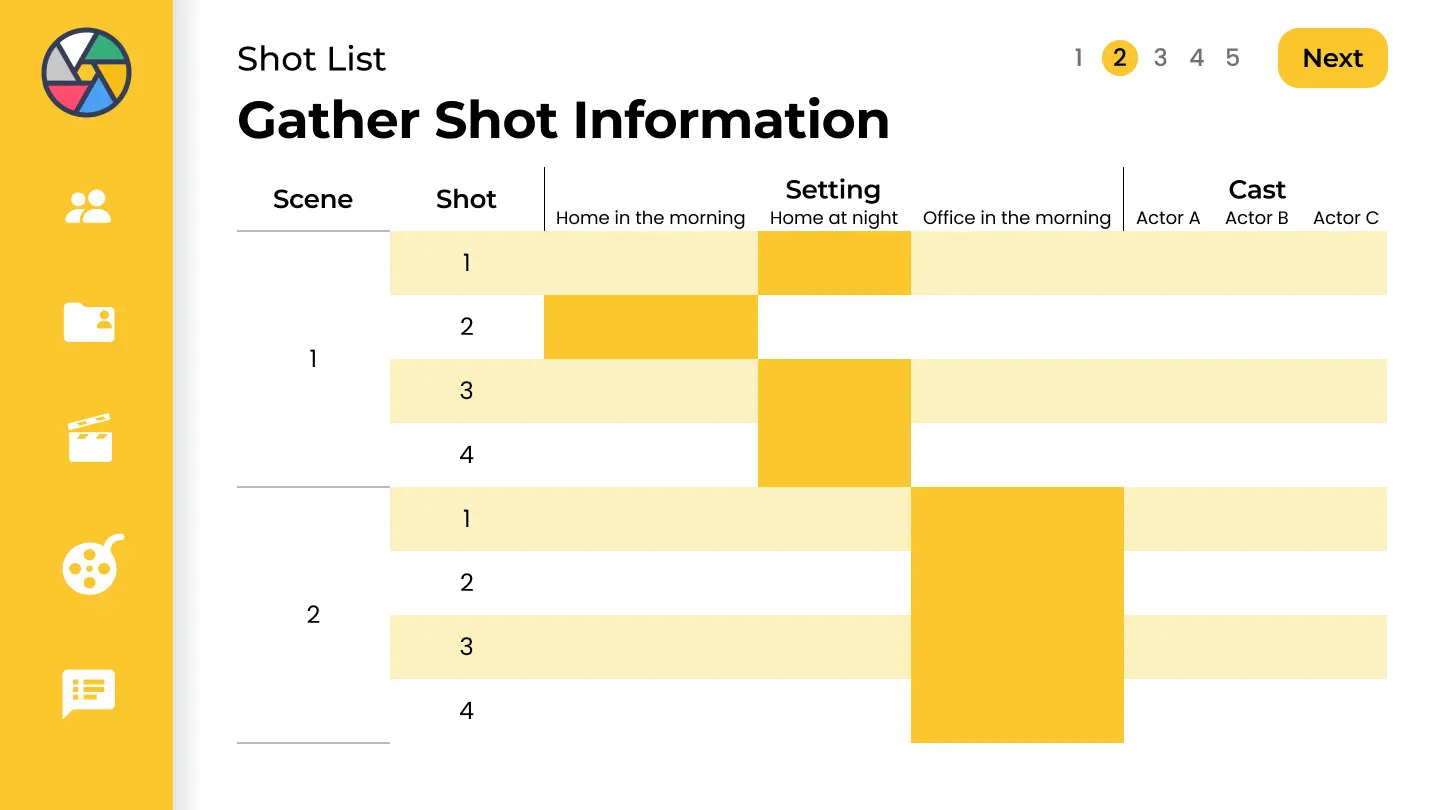
Objective: Enable convenient and efficient mobile recording of production notes.
Key Metric: Achieve a 95% user engagement rate with the mobile recording feature.
Filmmaking often requires capturing spontaneous moments on set. Mobile recording ensures users can quickly document insights, enhancing the quality of production notes. High user engagement indicates that users find this feature valuable and easy to use.
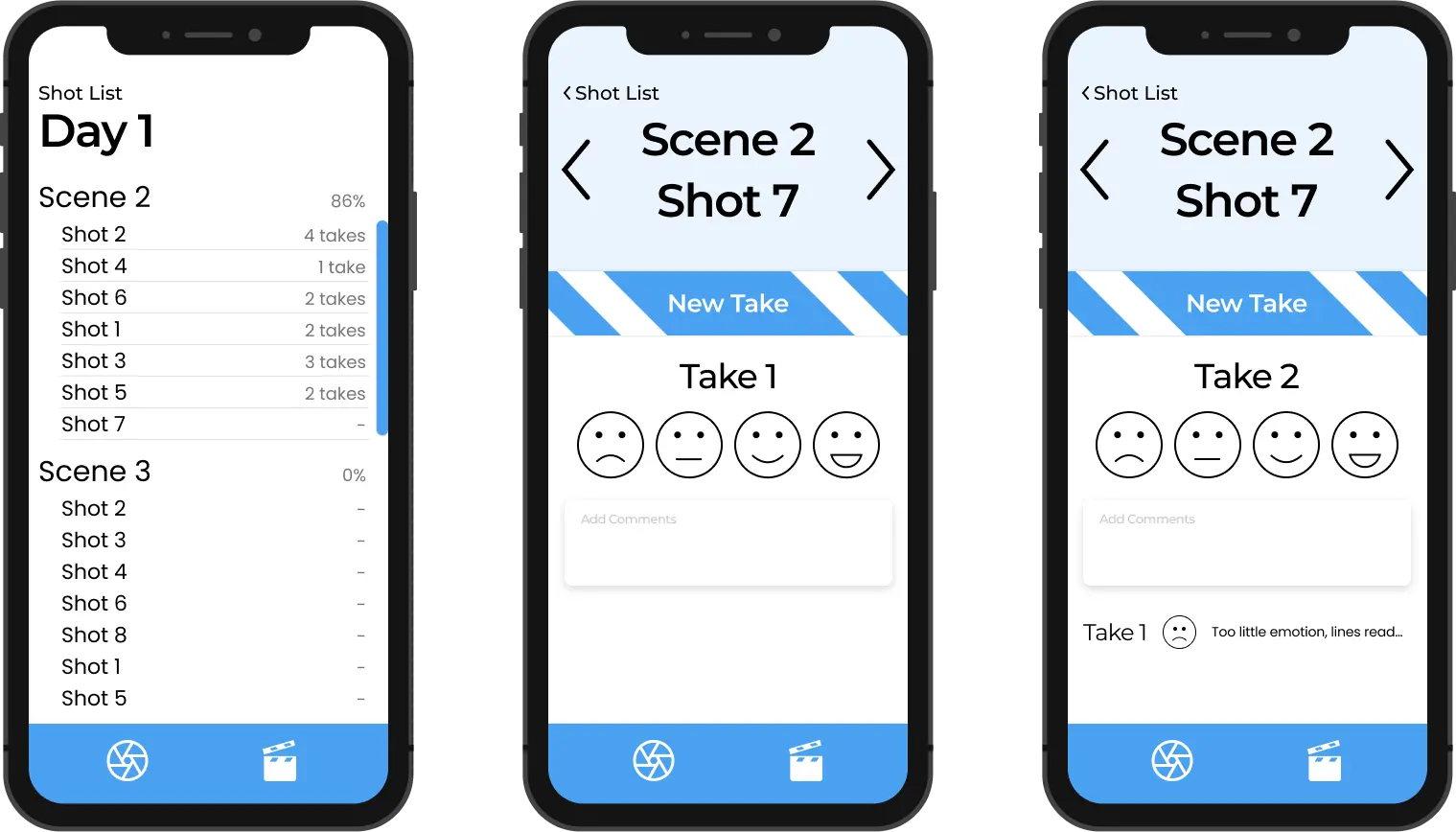
Objective: Optimize the organization of footage files for post-production ease.
Key Metric: Reduce the time required to organize footage by 30%.
Efficiently organizing footage simplifies the editing process. Users should be able to access their materials without hassle. Reducing the time required indicates the effectiveness of the organization system, contributing to overall efficiency.

Objective: Provide a user-friendly interface for viewing production notes.
Key Metric: Achieve a 95% user satisfaction rate with the production notes viewing feature.
Accessing production notes is essential for decision-making during filming and post-production. A high user satisfaction rate reflects a well-designed interface, ensuring that users can easily refer to their insights when needed.
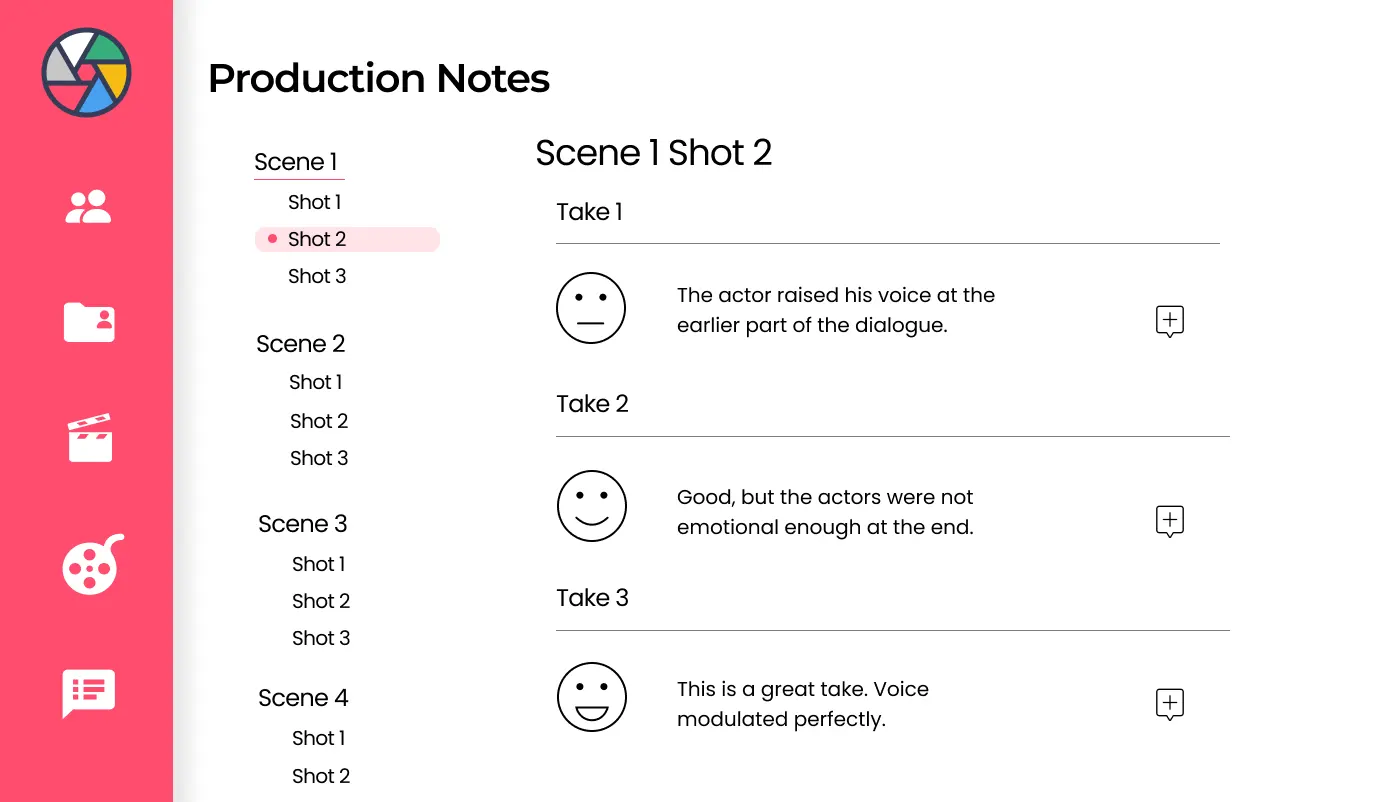
The app facilitates seamless communication between directors, cinematographers, and other key creatives. It integrates visual storyboarding, video conferencing, and chat functions to effectively express and realize creative visions.
While fostering creativity, the app incorporates tools for budget tracking, scheduling, and resource management. This ensures creative ideas align with project constraints, maintaining a balance between artistic vision and practical considerations.
The application efficiently manages the iterative creative process through version control, feedback tracking, and annotation features. This streamlines collaboration, change tracking, and revision management, supporting the dynamic nature of creative projects.

